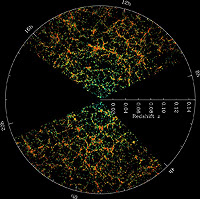Each base is slightly different, and is sloped so that rain will funnel into the areas between the concrete to help plants grow wild. These bases form a sort of public park space and serve a technological purpose. Each one contains a torque generator that converts the kinetic energy from the stalk into energy using shock absorber cylinders similar to the kind being developed by Cambridge, Massachusetts-based Levant Power. Two large chambers below the whole site will work like a battery to store energy. The idea is based on existing hydroelectric pumped storage systems. Water in the upper chamber will flow through turbines to the lower chamber, releasing stored energy until the wind starts up again.
The top of each tall stalk has an LED lamp that glows when the wind is blowing -- more intensely during strong winds and not all when the air is still. The firm anticipates that the stalks will behave naturally, vibrating and fluttering in the air.
Video story link
Image Credit link



















.djvu.jpg)

























